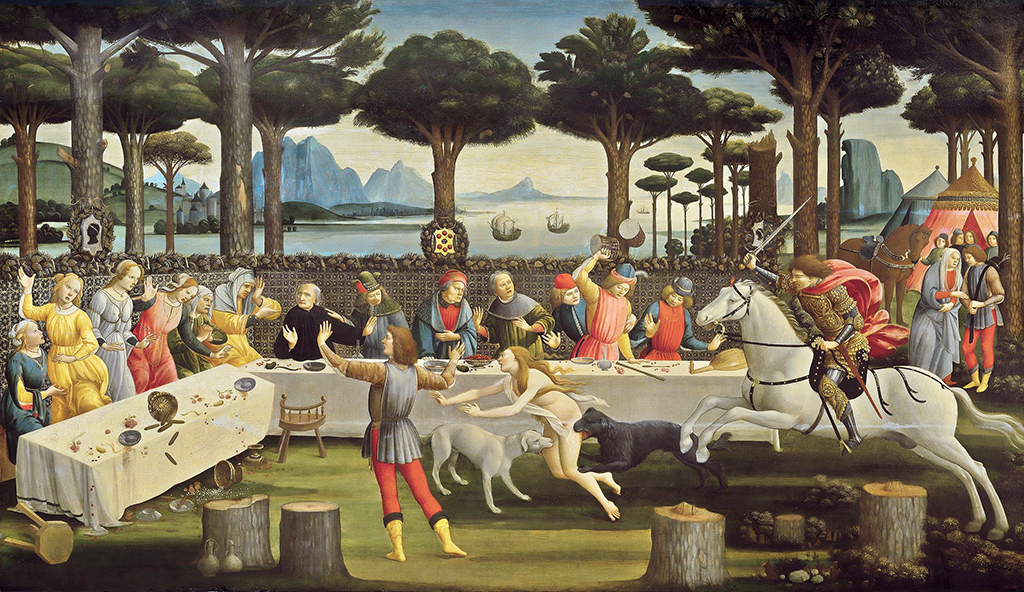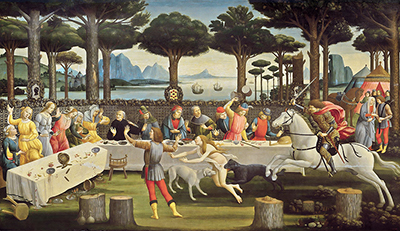The artist took several related episodes from a collection of short stories to inspire the content for four panel paintings. He was commissioned by Lorenzo the Magnificent in 1483 for this project and we can tackle the different artworks one by one.
Alongside this panel, which was titled The Banquet in the Forest, there was also Nastagio Meets the Woman and the Knight in the Pine Forest of Ravenna, Marriage of Nastagio degli Onesti and also the brutal Killing the Woman. The composition in front of us here features a large number of figures who have come together for a large banquet. The scene is thrown into chaos as a knight on horseback arrives with his sword in the air as he continues to chase a young woman who flees in desperation. One of the tables is overturned, with bowls and food falling onto the floor. The well dressed guests appear shocked and scared by the sudden change in proceedings. They are surrounded by a walled feature, which includes some symbols of their community. There are also some tents to the right hand side which suggests this is quite a considerable gathering.
In the background we have similar features to those used in the other panels, with mountains jutting up in the far distance. There are some charming ships making their way across some tranquil seas as well as a small piece of architecture across on the left hand side. The trees chosen for this artwork are narrow in the main, before widening at their tips, which allows the artist to use them as decorative features but without covering any of the main detail. Botticelli limits the palette for clothing, with most figures wearing dresses in yellow, blue and pink. The detail across the piece is exquisite, with much to enjoy for those able to see this artwork up close. All manner of animals and touches of nature are included here that you might not notice until your third or fourth time looking at the painting. Botticelli chooses here to separate the foreground and background in a fairly clear fashion that might remind some of the art of the Middle Ages, even though Botticelli himself was generally a fairly innovative artist.
The artist would lose fame for a number of years after his death before returning to prominence in the 19th century thanks to support from a number of British artists. It was the Pre-Raphaelites would themselves were highly knowledgeable on the Italian Renaissance who managed to convince art historians to re-appraise Botticelli's career and ever since then he has returned to the status that he managed to achieve during his own lifetime. The movement included the likes of Dante Gabriel Rossetti, John William Waterhouse and William Holman Hunt and they were also known for focusing on female portraiture, often within scenes inspired by British and Italian literature. It still seems strange that such a gifted artist from the past could be forgotten for so long, when today he is rightly regarded as one of the most gifted Italian artists in all art history.





